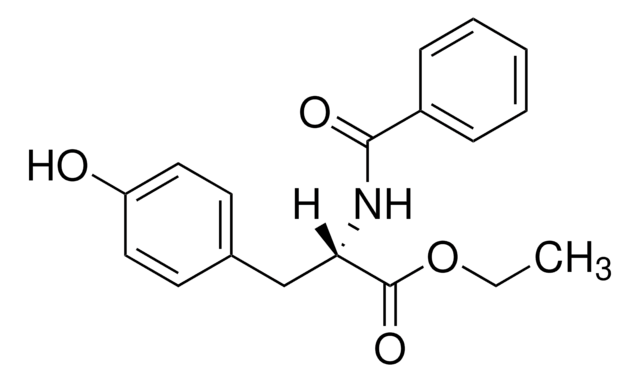About This Item
Recommended Products
grade
reagent
Quality Level
vapor pressure
0.01 hPa ( 20 °C)
product line
ReagentPlus®
Assay
≥99.0%
form
powder
pH
5-8 (25 °C, 147 g/L)
mp
176 °C (dec.) (lit.)
SMILES string
O.O.Cl[Ca]Cl
InChI
1S/Ca.2ClH.2H2O/h;2*1H;2*1H2/q+2;;;;/p-2
InChI key
LLSDKQJKOVVTOJ-UHFFFAOYSA-L
Looking for similar products? Visit Product Comparison Guide
Related Categories
General description
Application
- In the asymmetric 1,4-addition and [3+2]-cycloaddition reactions in the presence of box-type ligands.
- To synthesize hexahydropyrimidine derivatives via a one-pot three-component condensation reaction of ethyl/methyl acetoacetate, aniline, and formaldehyde.
It can also be used as a calcium precursor to synthesize macro/mesoporous dicalcium phosphate monolith (CaHPO4) via the sol-gel method using phosphoric acid (H3PO4), and poly(acrylic acid) (PAA).
Legal Information
Signal Word
Warning
Hazard Statements
Precautionary Statements
Hazard Classifications
Eye Irrit. 2
Storage Class Code
13 - Non Combustible Solids
WGK
WGK 1
Flash Point(F)
Not applicable
Flash Point(C)
Not applicable
Regulatory Listings
Regulatory Listings are mainly provided for chemical products. Only limited information can be provided here for non-chemical products. No entry means none of the components are listed. It is the user’s obligation to ensure the safe and legal use of the product.
ISHL Indicated Name
Substances Subject to be Indicated Names
ISHL Notified Names
Substances Subject to be Notified Names
JAN Code
C3881-2.5KG:
C3881-5KG:4548173191478
C3881-1KG:4548173191454
C3881-12KG:
C3881-500G:4548173191461
C3881-BULK:
C3881-VAR-D:
C3881-VAR:
2530143:
Choose from one of the most recent versions:
Already Own This Product?
Find documentation for the products that you have recently purchased in the Document Library.
Customers Also Viewed
Our team of scientists has experience in all areas of research including Life Science, Material Science, Chemical Synthesis, Chromatography, Analytical and many others.
Contact Technical Service





